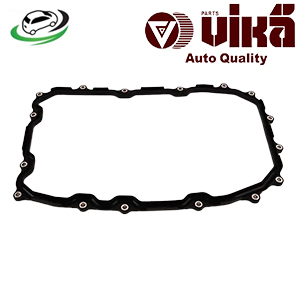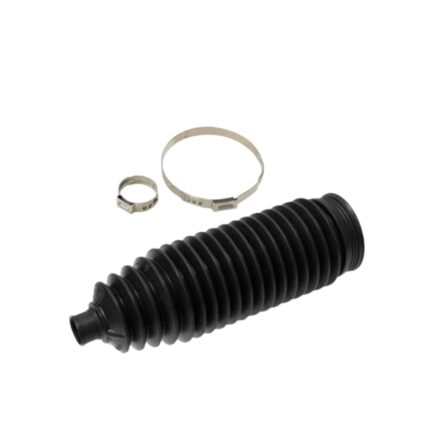Get Front Left Lower Ball Joint AUDI A3/S3/SPORTB./LIM./QU. 1997-2003 1J0407365C
Ball joints are critical components in a vehicle’s suspension system. They act as pivot points that connect the control arms to the steering knuckles, allowing for smooth and controlled movement of the wheels. This guide provides an in-depth look at ball joints, including their function, types, common issues, signs of failure, maintenance, and replacement.
Function of Ball Joints
Ball joints serve several essential functions:
- Pivot Point: They act as a pivot point between the control arms and the steering knuckles, allowing the wheels to move up and down while steering.
- Steering Control: Ball joints enable the steering knuckle to turn the wheels, providing precise control over the vehicle’s direction.
- Suspension Movement: They allow for smooth up and down movement of the suspension, which helps absorb road shocks and maintain tire contact with the road surface.
- Load Bearing: Ball joints bear the weight of the vehicle and manage the forces exerted during driving, braking, and cornering.
Types of Ball Joints
Ball joints come in various types, designed to meet specific requirements of different suspension systems:
- Load-Bearing Ball Joints:
- Upper Ball Joints: These are typically used in double-wishbone or control arm suspension systems and bear less weight compared to lower ball joints.
- Lower Ball Joints: Located at the bottom of the suspension system, these ball joints bear the vehicle’s weight and are subjected to higher forces.
- Non-Load-Bearing Ball Joints:
- Tie Rod Ends: These ball joints connect the steering linkage to the steering knuckle and are essential for steering control.
- Sway Bar Links: These connect the sway bar to the suspension components and help stabilize the vehicle during cornering.
- Sealed vs. Greaseable Ball Joints:
- Sealed Ball Joints: These are permanently lubricated and do not require maintenance. They are sealed to prevent dirt and moisture from entering.
- Greaseable Ball Joints: These have a grease fitting, allowing for periodic lubrication to extend their lifespan and performance.
Importance of Ball Joints
Ball joints are crucial for several reasons:
- Safety: Properly functioning ball joints are essential for safe steering and handling, preventing loss of control or accidents.
- Ride Comfort: They help absorb road shocks, contributing to a smooth and comfortable ride.
- Tire Wear: Well-maintained ball joints ensure even tire wear, extending the lifespan of the tires.
- Suspension Performance: They are integral to the suspension system’s ability to maintain proper alignment and handling characteristics.
Common Issues with Ball Joints
Several issues can affect the performance and longevity of ball joints:
- Wear and Tear: Over time, ball joints can wear out due to constant movement and load-bearing. The ball and socket can develop play, leading to loose or imprecise steering.
- Corrosion: Exposure to moisture, road salt, and debris can cause corrosion, which can weaken the ball joint and lead to failure.
- Loss of Lubrication: Sealed ball joints can lose lubrication over time, while greaseable ball joints may not receive sufficient lubrication if not maintained properly.
- Impact Damage: Hitting potholes, curbs, or other obstacles can damage the ball joint, causing it to fail prematurely.
Signs of a Faulty Ball Joint
Identifying signs of a faulty ball joint can help address issues before they lead to more severe problems:
- Clunking Noise: A clunking or knocking noise, especially when going over bumps or turning, can indicate a worn ball joint.
- Excessive Play: Loose or imprecise steering can result from excessive play in the ball joint.
- Uneven Tire Wear: Abnormal or uneven tire wear can be a sign of a faulty ball joint affecting alignment and suspension geometry.
- Vibration: A vibrating or shaking steering wheel can indicate a problem with the ball joint.
- Vehicle Drifting: If the vehicle drifts or pulls to one side, it could be due to a faulty ball joint affecting alignment.
Maintenance and Prevention
Proper maintenance of ball joints can help ensure their longevity and effectiveness:
- Regular Inspections: Inspect ball joints during routine maintenance for signs of wear, damage, or play. Check for torn or damaged dust boots.
- Lubrication: For greaseable ball joints, ensure they are properly lubricated according to the manufacturer’s recommendations.
- Protect from Corrosion: Keep the suspension components clean and free from dirt, moisture, and road salt. Apply corrosion-resistant coatings if necessary.
- Avoid Impact Damage: Drive carefully to avoid hitting potholes, curbs, and other obstacles that can damage the ball joints.
Replacement of Ball Joints
Replacing ball joints involves several steps, which can vary depending on the vehicle and suspension type:
- Preparation:
- Tools and Materials: Gather necessary tools, including a ball joint press, socket set, wrenches, and replacement ball joints.
- Safety Measures: Ensure the vehicle is securely supported on jack stands and the wheels are removed.
- Remove Old Ball Joint:
- Disconnect Components: Remove any components connected to the ball joint, such as the control arm, steering knuckle, or sway bar link.
- Remove Ball Joint: Use a ball joint press or appropriate tool to remove the old ball joint from the control arm or steering knuckle.
- Install New Ball Joint:
- Position Ball Joint: Position the new ball joint in the control arm or steering knuckle, ensuring it is aligned correctly.
- Press Ball Joint: Use a ball joint press or appropriate tool to press the new ball joint into place, ensuring it is seated securely.
- Reconnect Components: Reattach any components removed to access the ball joint, tightening bolts and nuts to the manufacturer’s specifications.
- Final Steps:
- Lubricate: For greaseable ball joints, apply the recommended amount of grease.
- Reinstall Wheels: Reinstall the wheels and lower the vehicle.
- Test Drive: Take the vehicle for a test drive to ensure the new ball joint is functioning properly and there are no issues with steering or suspension.
Follow us on Facebook for more parts.



